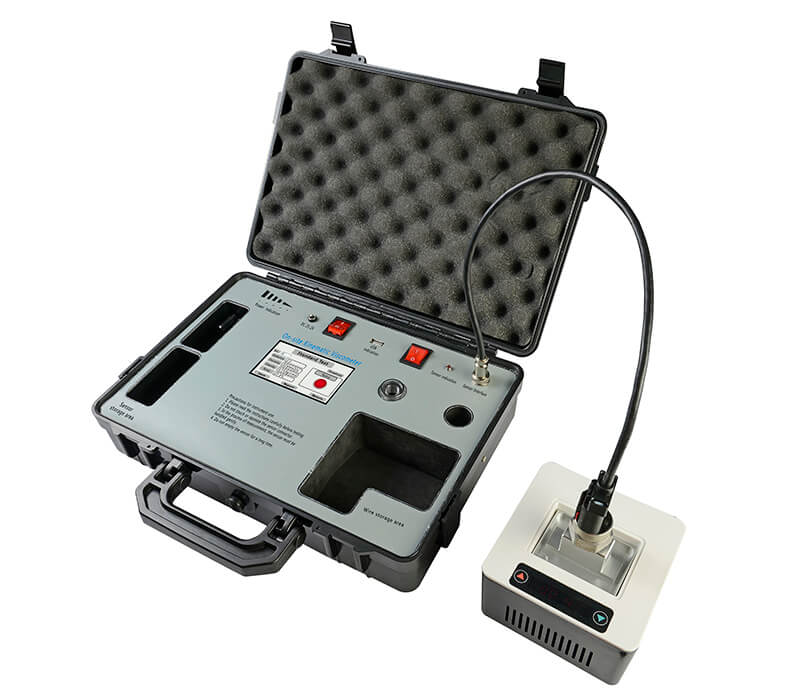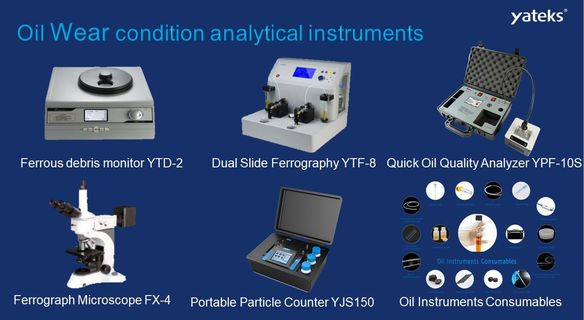According to relevant research data reports, more than 70% of mechanical equipment failures are generated by wear and tear. About 1/3~1/2 of the world’s energy production is consumed in the friction loss. With the rapid development of modern industry, how to ensure the safe and stable operation of machinery and equipment, reduce the occurrence of failure, reduce maintenance costs has become a pressing issue. On the basis of scientific and reasonable lubrication technology, the establishment of machinery and equipment wear state monitoring and fault diagnosis technology has significant social and economic benefits. Oil analysis is one of the very effective non-destructive monitoring means.
Oil analyzers have a fairly long history of monitoring applications on railroad internal combustion engines. In the early days, the oil analyzer only did routine analysis of the physical and chemical indexes of new and in-use lubricants, which was very simple. With the rapid development of the railroad, the railroad develops to heavy load, high speed, automation and high efficiency. The maintenance costs and downtime losses of internal combustion locomotives have also increased dramatically. The traditional planned maintenance method has high maintenance cost. It cannot maximize the efficiency of locomotive use. Therefore, it cannot meet the real demand. The railroad system has gradually introduced advanced oil analysis instruments such as chromatography, spectroscopy and iron spectrum.
The application of these instruments is characterized by their easy operation, convenient diagnosis, high efficiency and accurate results. Therefore, they are widely used in the field of internal combustion engine fault diagnosis. However, due to the differences of various internal combustion locomotives in structural design, manufacturing process and raw material materials, there is no uniform standard for the characteristic parameters of various oil analyzers in fault diagnosis. It has brought great inconvenience to the oil monitoring personnel and locomotive maintenance personnel in the locomotive section. It seriously affects the accuracy of fault diagnosis by means of oil analysis.
From the common methods of fluid analysis, application areas, development direction, oil analysis content to give you a simple analysis, and briefly introduce you to two by Shenzhen Yateks independent research and development and production of oil quality analysis products with national intellectual property rights patents.
Let’s take a look at common oil analysis content and methods
-
wear particle analysis
Analysis: Number of grinding particles, size distribution, composition and shape/type
Analysis methods: iron spectrum, emission spectrum, particle count, etc
Objective: Determine the main wear area, the degree of wear and the mechanism/cause
-
oil deterioration and pollutant analysis
Analysis: oil deterioration and pollutant types and quantities
Analysis methods: infrared spectrum, emission spectrum, iron spectrum and other methods
Objective: Determine the availability of oil and related system failures and causes
-
the analysis of conventional physical and chemical indicators
Analysis: Viscosity, flash point, moisture, total alkali value / acid value, etc
Analysis methods: viscosity/flash/moisture meter, titration method, speckle test, etc
Objective: Determine the availability of oil and related subsystem failures and causes
The role of fluid analysis and diagnostic techniques
1.the basic tools of maintenance and risk detection on a situational level
2. lubrication, wear and related troubleshooting
3.determine the best lubricant (lubricant/grease)
4. to achieve lubrication monitoring, determine a reasonable oil change cycle
5. Extend the interval between major repairs and reduce the cost of equipment maintenance


